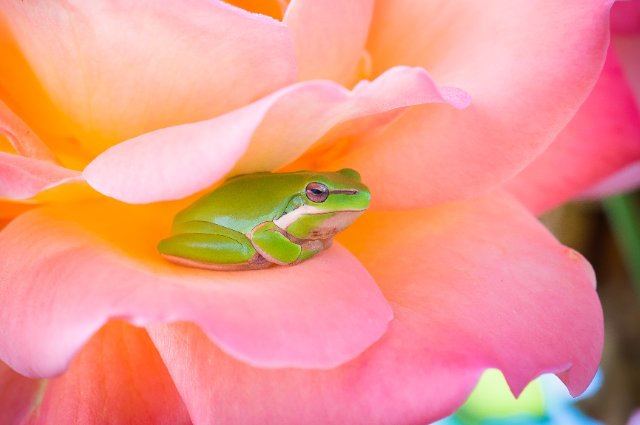
Photo by Stephen Hocking on Unsplash
Frogs, salamanders, newts, and other amphibians were the tiny subjects of a study that found 41% threatened with extinction.
A study published on October 4, 2023, in the journal 'Nature' reveals that 41% of amphibian species in the study are threatened with extinction.
The biggest threat to amphibians is habitat loss, agricultural and industrial development. Additional threats to these tiny creatures include climate change.
Whenever the name of an endangered species, the first animals that come to our mind are probably, Pandas and Red Wolves or other creatures. We might be unaware that there has been a rapid decline in amphibians since 2004.
Are amphibians actually becoming an endangered species?
Researchers conducted the second-ever Global Amphibian Assessment, which includes studying over 8,000 amphibian species for the International Union for Conservation of Nature Red List of Threatened Species.
The study concluded that amphibians are the 'most threatened vertebrae class', with just over 40% of species noted as globally threatened.
Disease and habitat drove the deterioration of 91% population between 1980 and 2004. Lately, habitat loss can be attributed to climate change events.
The research paper recommends 'immediate conservation action' to reverse the current trends.
Biologist of the University of Texas, Michael Ryan, noted that amphibians were particularly vulnerable for several reasons.
The first is that their unique life stages often require particular habitats (that is, from tadpole to full frog) and not having these habitats can disrupt their life cycles.
Second, amphibians have delicate skin and they breathe oxygen through their skin making them highly susceptible to chemical pollution, bacteria, and other fungal infections that could hurt them.
Additionally, climate change can impact the amphibians if temperatures change too drastically. Their unique biology makes them very sensitive to environmental changes.
The study also reports that the most threatened species lived in the 'Caribbean Islands, Mesoamerica, the Tropical Andes, the mountains and forests of Western Cameroon and Eastern Nigeria, Madagascar, the Western Ghats and Sri Lanka.'
Why are amphibians important?
Amphibians are an important part of the ecosystem as per the American Natural History Museum, they provide a critical food source to other species while eating less desirable insects.
The American Natural History Museum also notes that frogs are an important environmental indicator and that frogs in particular are 'warning signs' of endangered ecosystems.
. . .
Reference:
- nature.com
- greenmatters.com
